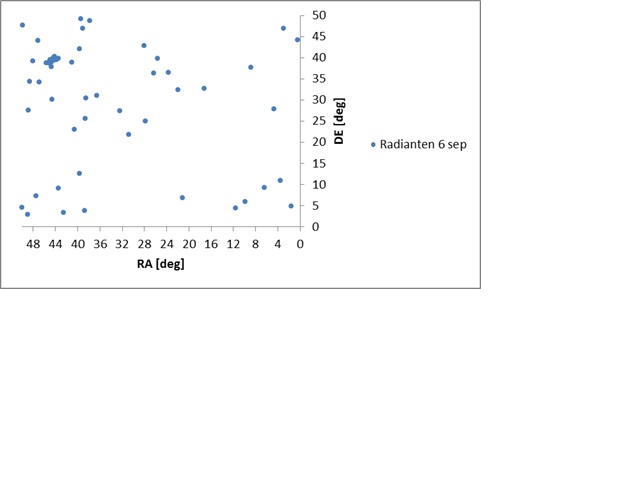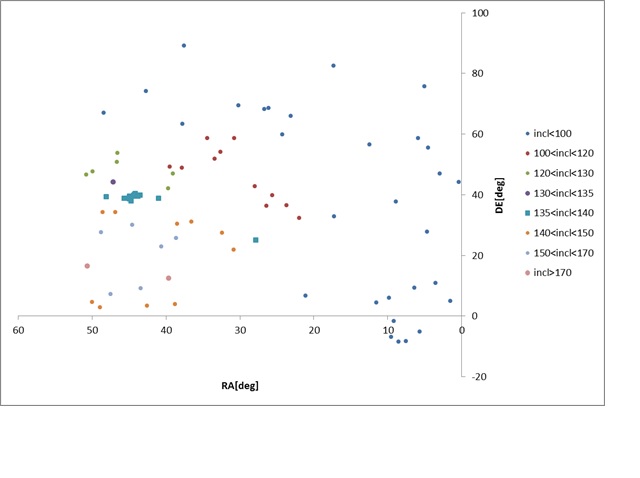The CAMS_BeNeLux network catched the activity of the September Perseids right from the start on September 6th.
Figure 1a/b shows the radiants of simultaneously observed meteors by our team in that part of the sky between Sep 1-5 (Fig. 1a) and the night Sep 6/7 (Fig. 1b).
To exclude the sporadic source, which is very active this time of year, I plotted Figure 1b once again, but radiants colored in groups of same inclination : see Figure 1c.
![Fig 1a: radiantpositions in the sky between RA [0;50) and DE [0;50]](https://www.emeteornews.net/wp-content/uploads/2016/09/Figuur1.jpg)
Fig 1a: radiantpositions in the sky between RA [0;50) and DE [0;50]

Fig 1b: radiantpositions in the same part of the sky on Sep 6/7

Figure 1c: same as figure 1b ; radiants now divided in groups with same inclination
So there is no doubt that the meteors appearing from ~ RA=45 deg and DE=40 deg, are indeed September Perseids.
I want to thank all participants in the CAMS_BeNeLux network for the quick reduction of their data.

